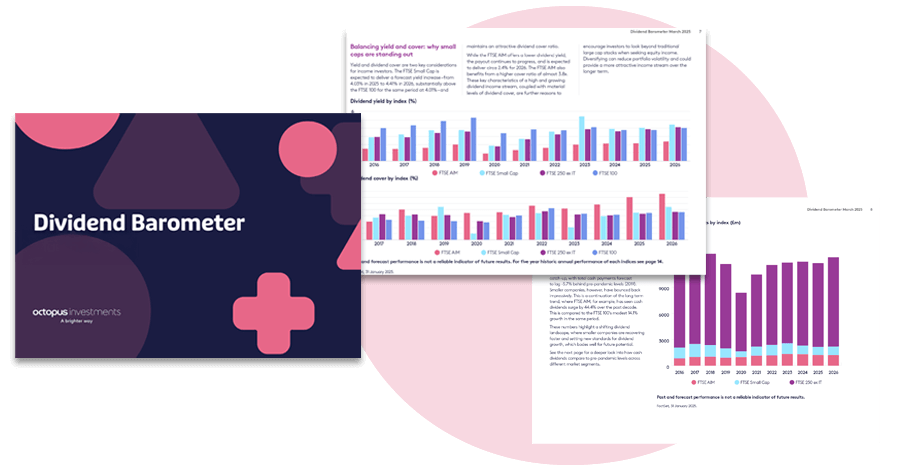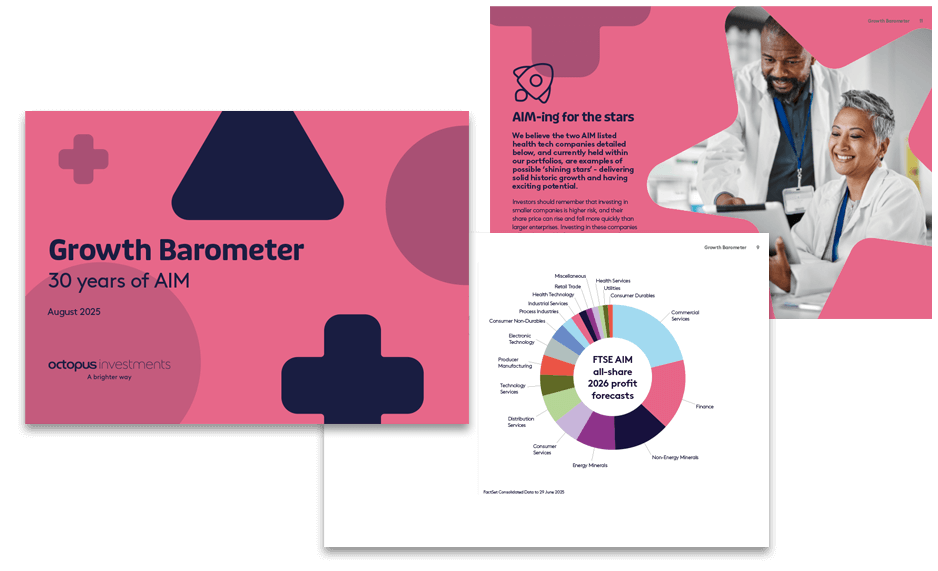Guide
Risk and return is linked
A guide to explaining risk, return and volatility
The aim of this guide is to help you to gain a better understanding of the relationship between risk, return and volatility. To keep things simple, we’ll only be talking about investing in funds, rather than investing in specific companies. It will also offer some useful pointers to help you understand your own attitude towards risk, and hopefully help you to make better investment decisions.
There’s an intrinsic link between risk and return in everything that you do. Investing is no different.
You may not think about risk on a regular basis, but you take hundreds of risks every day — driving a car, stepping into the shower, choosing what to eat. In most instances these are ‘calculated’ risks: you’ve assessed the situation, weighed up your options and decided the risk is worth taking. It’s really only when things go wrong that the risks you take become significant.
There’s no greater example of failing to take risk seriously than the 2008 ‘Global Financial Crisis’. Financial institutions all over the world had been putting money into assets that were much riskier than were claimed, in the pursuit of returns. These assets were ultimately revealed to be worth far less than they were being bought and sold for. It was a painful lesson that taking a calculated risk can be disastrous if you’ve got the calculations wrong.
Risk should be calculated, assessed and understood
Risk should be calculated, assessed and understood
Investors tend to judge the success of their investments by the returns they make, but the return tells only half the story. Risk is as important as any other aspect of making an investment decision. In fact, it’s arguably the most important aspect.
Everyone’s view of risk is different; an investment that appears low risk to one individual may be considered high risk by someone else. So, before you make any investment decisions, it’s important that you:
- Understand the relationship between risk, return and volatility
- Recognise the potential impact that risk could have on your current and future investments
- Discuss your attitude towards risk and return requirements with your financial adviser
Ignoring risk when making investments can prove costly. Understanding the risk of an investment is as important as understanding the possible returns. There’s an intrinsic link between risk and return in everything that you do. Investing is no different.
How we define ‘risk’
How we define ‘risk’
The concept of risk has many different definitions, but to keep things simple, it makes sense to think about investment risk in three ways:
1. You could lose some or all of your investment
When you make an investment, you hope that it will increase in value and one day be sold for a profit. But there’s no guarantee. There is always a possibility that you end up losing part or all of your investment. Even if your investment grows in value, there’s no guarantee it will perform to your expectations. You can’t rely on an investment’s past performance to be repeated in the future.
2. Your investment may be worth less in the future
It’s also worth remembering that inflation (the rising cost of everyday goods and services) can erode the value of an investment over time. For example, if an investment returns 1.5% every year, but annual inflation rises at 2%, the money invested will be worth less when you look to spend it. This ‘inflation risk’ has become more of a concern in recent years, as very low interest rates have reduced returns available through cash savings accounts.
3. Your investment journey may be uncomfortable
Investments can be volatile, and the riskier the investment, the more unpredictable its return is likely to be. Alternatively, taking fewer risks should make your journey more comfortable, but could mean it takes much longer to reach your destination.
Putting risk into context
Putting risk into context
For most investors, the biggest risk they face is losing money. While the probability of losing capital can be high, especially in the case of individual stocks or shares, it may be reduced through diversification. Spreading your investments can provide greater control over a portfolio’s expected risk and return.
The key to long-term performance is about generating consistent returns while staying within acceptable levels of risk. When managing investments, striking the right balance is vital.
The relationship between risk and return
The relationship between risk and return
The aim of an investment is to deliver returns. You need your investments to deliver sufficient returns in order to achieve your long-term goals. But this means taking some necessary risks to get there.
Risk and return go together
You can’t have a sensible discussion about investing without talking about risk. And while everyone would like their investments to deliver the best possible returns, those returns shouldn’t come at any price. If an investment promises high returns without mentioning the risks it intends to take with your money, then it’s definitely too good to be true.
Choosing higher or lower risk investments
One of the fundamental principles of investing is that higher risk investments should, in theory, lead to higher rewards. But there are no guarantees. Investments that offer the potential for higher returns also come with a greater possibility that the investment will fail to meet expectations or fall in value.
At the other end of the risk spectrum, an investment that takes as little risk as possible, such as putting your money in a cash savings account will not deliver much of a return, and this low return may not even keep up with inflation.
The amount of risk you are prepared to take is really a matter of personal choice – there’s no ‘one size fits all’ approach. Some people want to take very little risk, because their priority is to not lose money. Others are prepared to take greater risks with their money if it means the possibility of achieving much higher returns.
However, most people sit somewhere between the two extremes, prepared to take some risks with their money but willing to sacrifice the potential for higher returns by investing in ways that make them less likely to suffer capital losses. Therefore, assembling the right combination of investments to meet these different requirements, and building portfolios that are designed to achieve the best return for the required level of risk is hugely important.
Finding out your own attitude towards risk is one of the first steps towards successful investing. Your financial adviser will be able to help you with this.
Volatility explained
Volatility explained
Understanding volatility is vital when it comes to choosing the right investments. But volatility doesn’t usually get discussed in depth.
Volatility is a way to calculate the risk of a particular investment, over a set period of time. A highly volatile investment is likely to experience more frequent, and possibly large, upward and downward movements in price than an investment with low volatility.
Measuring volatility
The most common way to measure volatility is through ‘standard deviation’. This measures how much the returns of an investment move away (or deviate) from its average returns. More volatile investments deviate further and more frequently from their average. Volatility is shown as a percentage, in the same way as investment returns are shown.
Let’s say an investment has an historical annualised volatility of 10% and has achieved an average annual return of 7% over the last ten years. These numbers tell us that over the last ten years, for just over two thirds of the time, the range of returns has been between 17% and -3% (a variance of +/-10% over the average return). For the other third of the time the returns were outside this range.
Managing volatility
Fund managers can use their predictions of the volatility of different sorts of investments when constructing portfolios to target certain levels of risk. This is known as ‘risk targeting’, and while it’s impossible to predict exactly what the return and volatility of an investment will be in the future, this approach makes it more likely that a portfolio of investments will perform as expected.
However, most funds don’t primarily focus on managing volatility. Instead, they tend to look to maximise returns from the assets they invest in. This typically means trying to ‘beat the benchmark’ within the sector in which they operate. As a consequence, the amount of risk within funds can vary wildly and their volatility is very difficult to predict, even for funds in the same sector.
Volatility and time
Your investment time frame can play a key factor in the performance of an investment portfolio. If you’re planning on holding an investment for a long time, the impact of its volatility is reduced. If you are invested in the market for a very long period of time, the ups and downs are much less significant.
However, investing in the market for shorter time frames means that the potential swings are much more pronounced, and more likely to have a bigger impact on your returns. This is why investors taking a longer term view are usually more willing – and able – to hold a greater proportion of higher risk investments.
Volatility cannot be avoided or removed from an investment, but it can be managed to make it work to the advantage of investors.
Some investment rules to remember
Some investment rules to remember
If you’re considering making an investment, it’s well worth sitting down with your financial adviser to discuss risk, return and volatility in more detail.
Know your objectives
With your financial adviser’s help, you can find the answers to the questions that will help to determine the right investment to suit you.
What are your investment goals?
Are you investing for a short-term goal (like a holiday or new kitchen) or investing for the longer-term, to help pay for your retirement? Understanding your investment timeframe and the return you need from your investment will largely determine the types of investment you should be considering.
How much risk are you prepared to accept?
Would you be comfortable if your portfolio fell in value by 5% over your investment timeframe? What if, in any one year period, it fell by 20%? Answering these questions will help you become more realistic about your personal attitude towards risk and losing money.
Avoiding the ‘risk lottery’ when choosing investments
Funds are usually grouped into one or more different sectors or ‘peer groups’, depending on the type of investments they hold. However, it’s worth remembering that funds within the same sector can be managed quite differently, with diverse underlying investments, and with stark differences in attitudes towards risk.
Therefore, choosing a fund purely by its sector, or by its performance ranking within that sector, can be something of a ‘risk lottery’. And there’s no guarantee the fund will continue to be managed with that risk target in mind. A fund that claims to be low risk now may not necessarily remain so in the future.
Diversification is important
You’ve probably heard the saying: ‘don’t put all your eggs in one basket’. In the investment world, this phrase is summed up in one word – diversification. No professional investment manager, no matter how experienced or gifted, can predict exactly which investments will perform well in any given year. So it makes sense to diversify – or spread – your money across a number of investments as broadly as possible, preferably across different assets, investment types, sectors and geographical regions.
Looking for risk-targeted investments
Risk-targeted investments take a different approach to more traditional ‘return-based’ funds. Investors start by choosing a level of risk (and return) they feel comfortable with. The investment manager manages a diversified portfolio of investments, with the aim of making sure it is capable of achieving its objectives. The risk target is important, as it helps to ensure:
- The returns generated by the investment become more reliable and predictable.
- Investors don’t take unnecessary risks and have too much exposure to the negative consequences of volatile markets.
After determining your attitude towards risk and return, the next step is to find an investment that maximises the potential returns while closely managing the risks taken to achieve it.
Next steps







